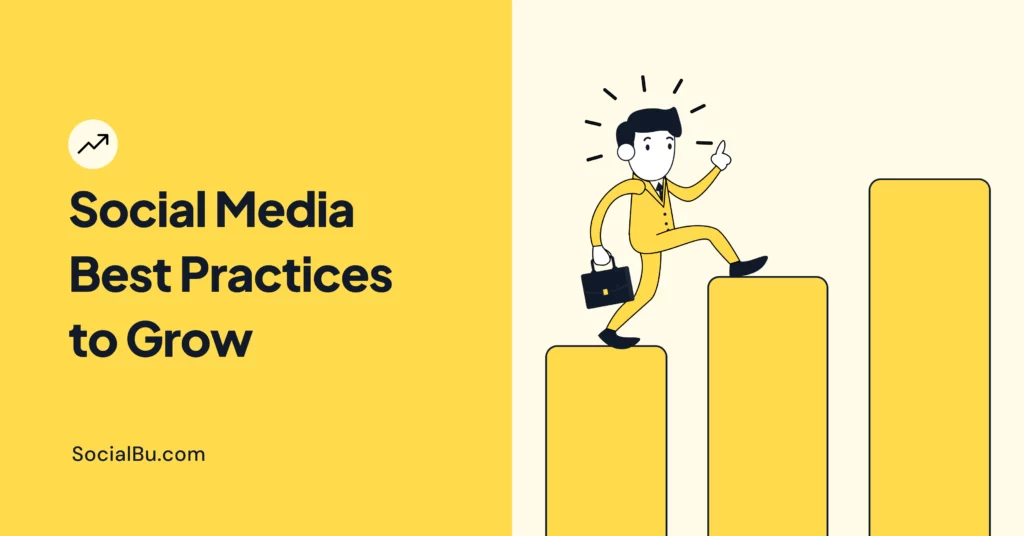With 5.17 billion active social media users, your social media presence and content creation must be top-tier to attract audiences’ attention.
Don’t worry—we have done the work to keep your brand on top of social media. We’ve cracked the code on the latest best practices and are sharing our top 11 secrets with you.
From killer content to engagement strategies, these expert tips will help you increase your social media presence and get your brand noticed.
So keep reading to ditch the frustration, grow your audience, and reach your social media goals.
The Social Media Landscape
Let’s discuss how major platforms evolve to remain competitive. Moreover, we’ll examine changing user behaviors and preferences, such as the growing demand for authenticity and raw content.
1. Trend Analysis
Social media continues to evolve rapidly, and 2025 is no exception.
One of the most significant trends is the shift towards video content. Platforms like TikTok, Facebook, and Instagram Reels feature have seen massive growth, pushing other platforms to integrate more video features. According to stats, tens of billions of videos are on Facebook and Instagram, and people spend over 60% of their screen time watching them.
This trend will continue as users increasingly prefer short, engaging video content over static images and text.
Another key trend is the rise of social commerce. Social media platforms are becoming more integrated with e-commerce functionalities, allowing users to shop directly within the app. According to Statista, earnings through social commerce are expected to reach one trillion U.S. dollars by 2028.
This means that this easy shopping experience helps businesses and brands market their products, help consumers make purchasing decisions via visual content, and generate sales.
2. Platform Evolution
Major social media platforms are continually updating their features to stay competitive.
For example;
- Instagram focuses more on Reels and Stories to compete with TikTok, making the platform feed more engaging and hooks the audience.
- LinkedIn has also introduced a video feed feature currently trending on the platform. Users are leveraging this latest LinkedIn feature to create engaging video content other than the regular text-form content to increase engagement.
- X (Twitter) has also introduced new features, such as spaces, videos, or an opt-in, paid subscription to access premium features.
Emerging platforms are also making their mark. Apps like Clubhouse, which focuses on audio content, are gaining traction. These platforms offer unique ways for users to engage and share content, making it crucial for businesses to diversify their social media best practices.
3. User Behavior
User behavior on social media is changing. According to stats, an average person spends almost 6 hours and 40 minutes daily on screen.
Now, with a short attention span, there is also a growing preference for content that disappears after a certain period, like Stories on Instagram and Snapchat. This type of content creates a sense of urgency and exclusivity, driving higher engagement rates.
Moreover, with every social media platform beaming with AI content, users now prefer authentic and original content that resonates with them. Users are leaning towards brands and creators that showcase raw and unfiltered content. They are less interested in overly polished posts and more in behind-the-scenes looks, fun activities, glimpses of daily activities, and user-generated content.
What Should You Do?
- Video Content: Prioritize creating short, engaging videos to meet user preferences.
- Social Commerce: Integrate shopping features into your social media strategy to capitalize on this growing trend.
- Platform Diversification: Stay updated with new features and emerging platforms to expand your reach.
- Short Content: Use Stories and similar features to create urgency and boost engagement.
- Authenticity: Focus on genuine, relatable content to build trust and loyalty among your audience.
Best Practices for Social Media Content
Content is king, and engaging audiences with it is more critical than ever. Let’s discuss the social media best practices for posting to elevate your content game.
1. Quality Over Quantity
The emphasis on quality over quantity continues to dominate social media best practices. Creating high-quality, engaging content is more effective than posting frequently with less valuable posts. Quality content captures attention, encourages interaction, and fosters loyalty among your audience.
To ensure your content stands out, produce visually appealing images, informative videos, and well-crafted captions.
2. Video Content
Video content is increasingly popular and crucial for reaching your audience. Short-form videos perform exceptionally well on platforms like TikTok and Instagram Reels, particularly those under one minute. These videos are engaging and easily digestible, making them more likely to be shared.
Consider using YouTube or Facebook for longer content, where users are more inclined to watch extended videos. Incorporating live streams can also foster real-time interaction and create a sense of community.
3. User-Generated Content
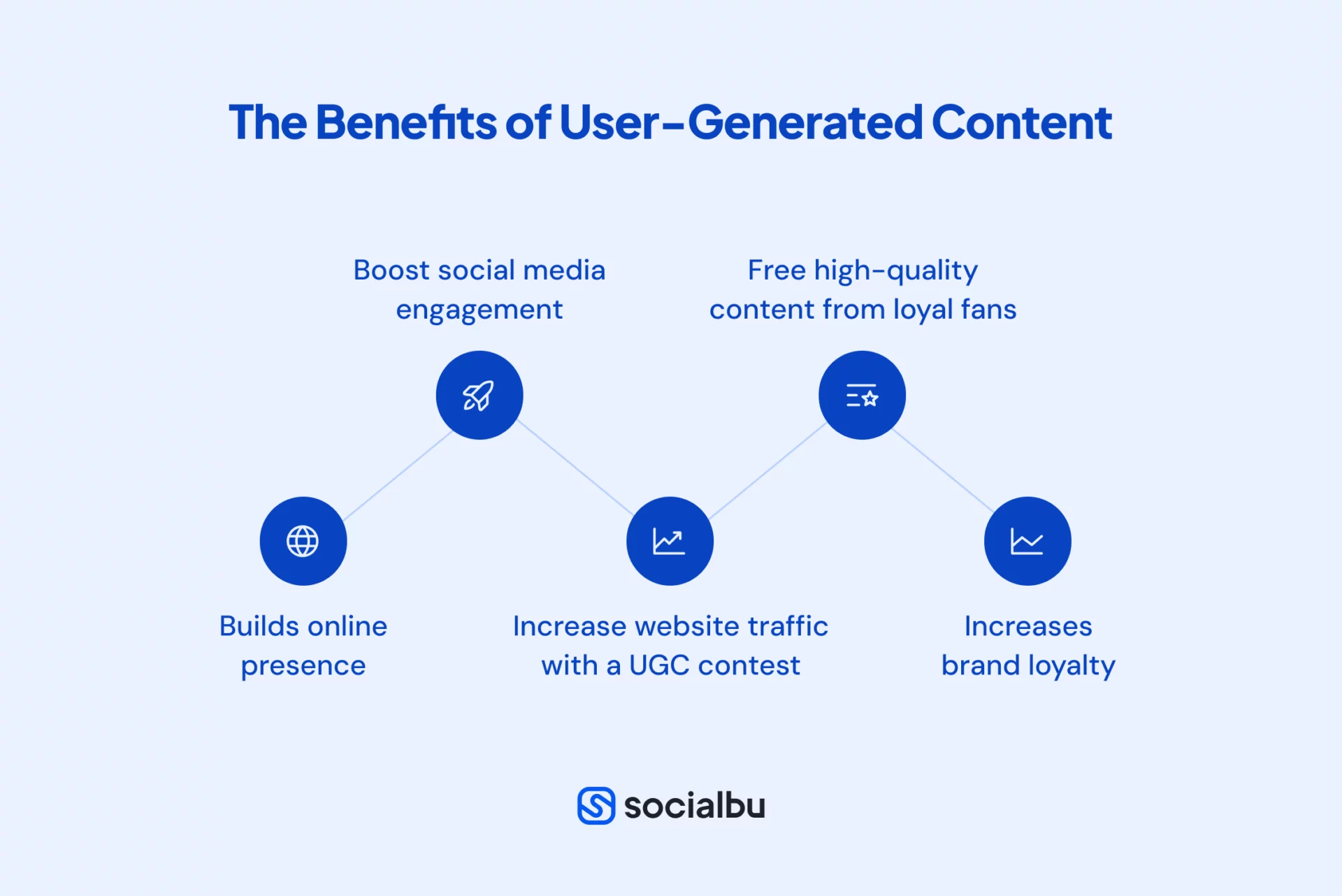
Leveraging user-generated content (UGC) boosts your brand’s credibility and fosters trust. Encourage your followers to share their experiences with your products or services.
Reposting their content fills your feed with authentic posts and makes your audience feel valued. This strategy is particularly effective for building a community around your brand.
4. Storytelling
Storytelling remains a powerful tool in social media marketing, as stories are 22 times more memorable than facts. Crafting compelling narratives allows you to connect with your audience emotionally. Share stories about your brand’s journey, customer experiences, or behind-the-scenes looks at your operations.
These stories make your brand more memorable and increase brand recall levels. Use Instagram Stories, Facebook Stories, and Snapchat to share these narratives more personally and directly.
5. Consistent Branding
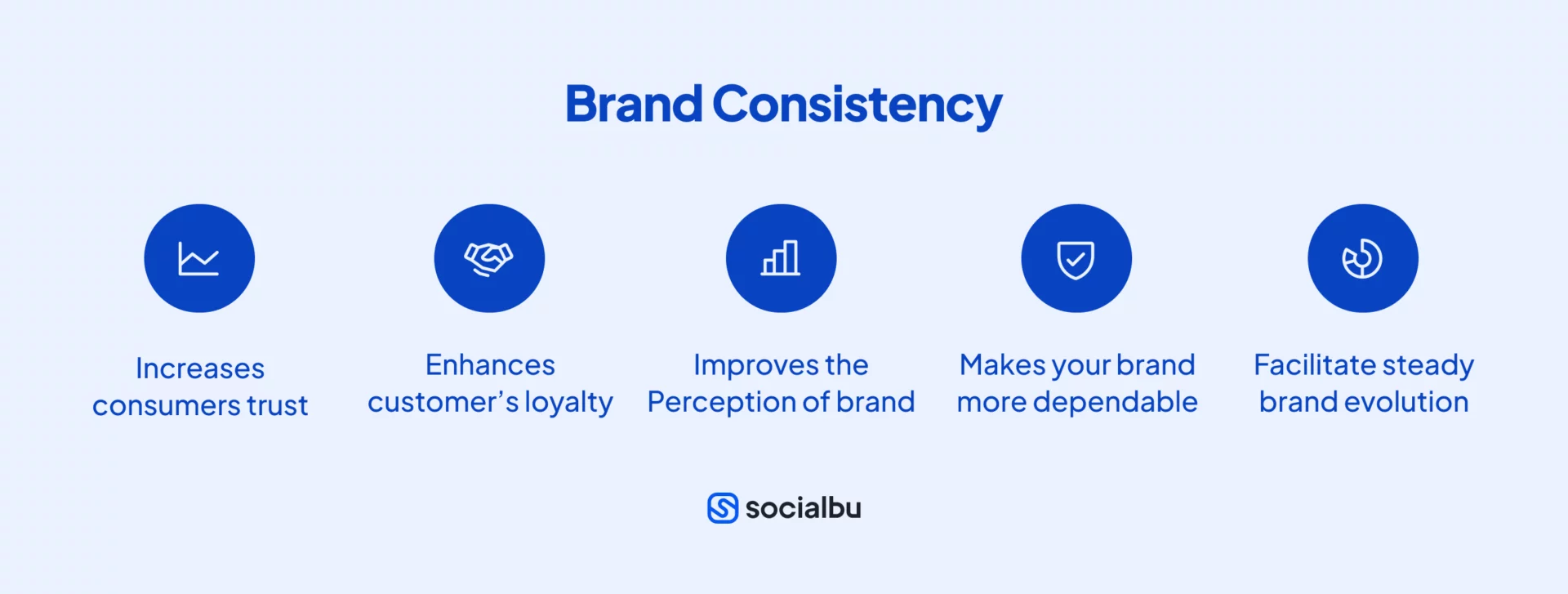
Your brand’s voice, style, and messaging should be uniform, creating a cohesive experience for your audience. Consistency helps in building brand recognition and trust. Use the same color schemes, logos, and tone of voice in all your posts to ensure your brand is easily identifiable.
6. Content Calendar
Planning your content using a content calendar significantly improves your social media strategy. It helps you organize and schedule posts, ensuring a consistent posting schedule. It also allows you to align your content with important dates, holidays, and events, maximizing engagement.
Last but not least, it provides a clear overview of your content strategy, making it easier to track performance and adjust as needed.
7. Engaging Captions and Hashtags
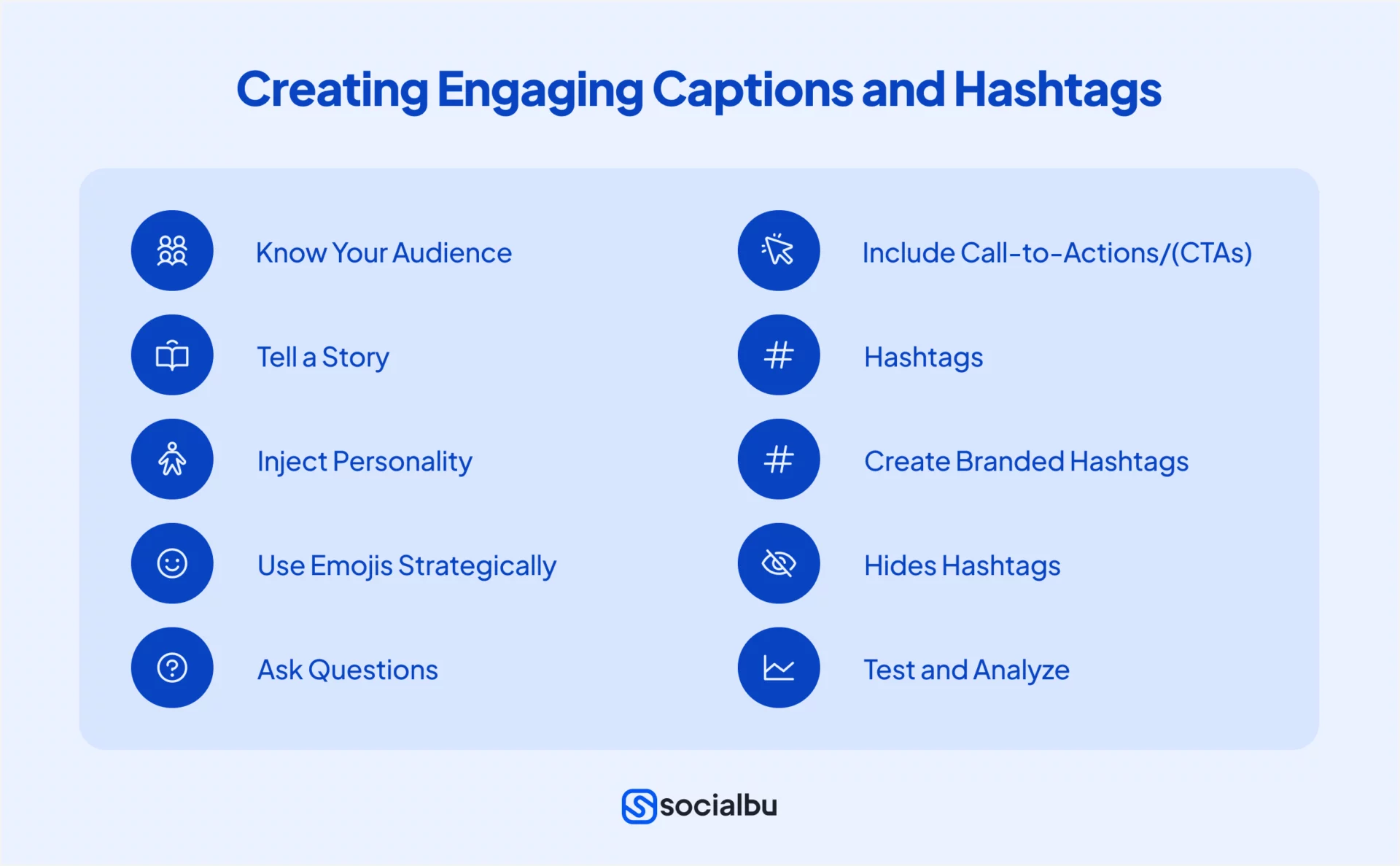
You can best use captions to tell a story, ask questions, or provide valuable information. And incorporate relevant hashtags to increase the discoverability of your posts. However, avoid overloading your captions with too many hashtags; a focused approach with a few impactful hashtags is more effective.
8. A/B Testing
Implement A/B testing to help you determine which types of content resonate best with your audience. Experiment with different formats, posting times, and styles to see what generates the most engagement.
Use the insights gained from these tests to refine your content strategy continually.
What Should You Do?
- Prioritize Quality: Focus on creating high-quality, engaging content.
- Embrace Video: Use short-form and live video content to capture attention.
- Leverage UGC: Encourage and share user-generated content to build trust.
- Tell Stories: Craft compelling narratives to connect emotionally with your audience.
- Maintain Consistency: Ensure consistent branding across all channels.
- Use a Content Calendar: Plan and organize your posts for a cohesive strategy.
- Engage with Captions and Hashtags: Write engaging captions and use relevant hashtags.
- A/B Test: Continuously test and refine your content strategy.
Leverage Advanced Social Media Tools and Features
Here is how to use social media tools to their fullest for top-notch performance:
1. Analytics Tools
Use analytics tools to understand your social media performance. These tools provide valuable insights into the following:
- Performance of your content.
- Your target audience.
- Result of your strategies in use.
For example, Google Analytics helps track traffic from social media to your website, offering a comprehensive view of your audience’s behavior.
Social media platforms like Facebook, Instagram, and Twitter also offer built-in analytics tools for engagement, reach, and demographics metrics. Regularly reviewing these analytics helps you make data-driven decisions to optimize your social media strategy.
2. Automation Tools
Automation tools save you time by allowing you to schedule posts in advance, ensuring a consistent posting schedule even when busy. They can also assist in managing interactions, such as responding to comments and messages.
However, over-reliance on automation can make your social media presence feel impersonal. Balance automated tasks with genuine, real-time interactions to maintain authenticity.
3. New Features
Staying updated with new features on social media platforms gives you a competitive edge. For example, Instagram frequently uses new features like Reels, Shopping, and Guides. These tools and Instagram best practices enhance your content’s visibility and engagement.
Twitter’s Spaces offers opportunities for real-time audio conversations, while LinkedIn’s enhanced content creation tools help you connect more effectively with a professional audience.
Regularly exploring and experimenting with these new features can keep your social media strategy fresh and engaging.
4. Integrating AI and Chatbots
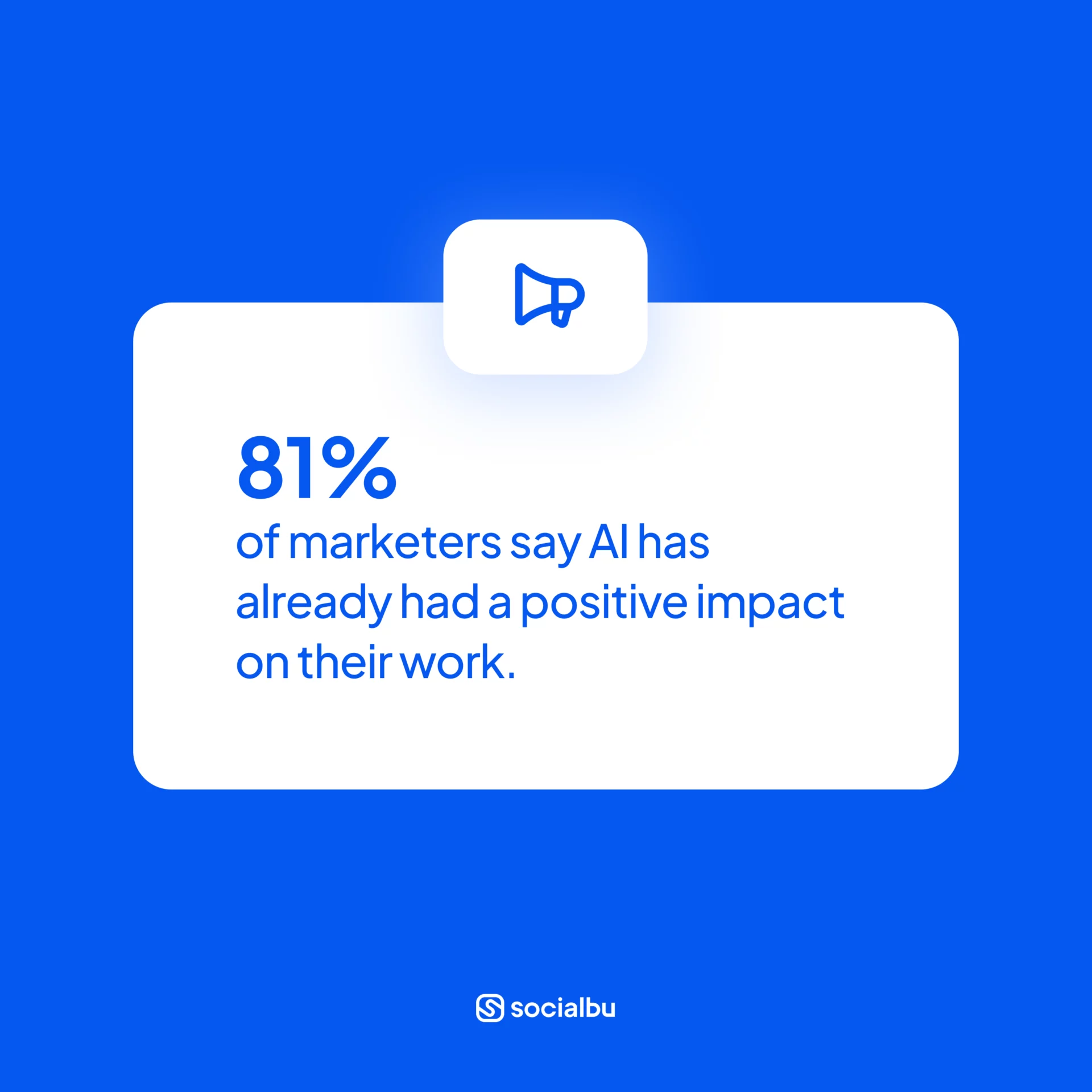
Source: Sprout Social Index
Artificial intelligence (AI) and chatbots transform how businesses interact with their social media audience. AI can analyze vast amounts of data to provide insights into trends and user behavior.
Chatbots can handle routine customer inquiries, providing instant responses and freeing up your team to focus on more complex interactions. Implementing AI and chatbots can improve efficiency and enhance the user experience on your social media platforms.
5. Social Listening Tools
Social listening involves monitoring your brand’s mentions and relevant keywords across social media platforms. Tools for social listening help you track conversations about your brand, competitors, and industry trends.
This information is invaluable for understanding public perception and identifying opportunities for engagement. You can build stronger relationships and improve your brand’s reputation by actively listening and responding to your audience.
6. Content Creation Tools
High-quality content is crucial for social media success; content creation tools like Canva can help you achieve this. These tools enable you to design visually appealing graphics and videos without advanced design skills.
These tools offer templates and easy-to-use interfaces, making content creation accessible to everyone. Investing in good content creation tools can elevate the quality of your posts and make your brand stand out.
What Should You Do?
- Use Analytics Tools: Regularly review analytics to make data-driven decisions.
- Employ Automation Thoughtfully: Balance automation with genuine interactions.
- Stay Updated with New Features: Experiment with new tools to keep your strategy fresh.
- Integrate AI and Chatbots: Improve efficiency and user experience with AI and chatbots.
- Utilize Social Listening: Monitor conversations to understand public perception and engage effectively.
- Leverage Content Creation Tools: Use tools to create high-quality, visually appealing content.
Engage with Your Audience
Building a strong, engaged community is at the heart of social media success. Let’s explore ways to encourage user participation, host interactive sessions, and create a sense of belonging among your followers.
1. Active Engagement
Active engagement is crucial for building and maintaining a loyal audience on social media. Responding to comments and messages promptly shows that you value your audience’s input and are attentive to their needs. This two-way communication fosters a sense of community and loyalty.
Use personalized responses instead of generic replies to make your audience feel heard and appreciated. Regularly interact with your followers to strengthen these relationships by liking, sharing, and commenting on their posts.
2. Community Building
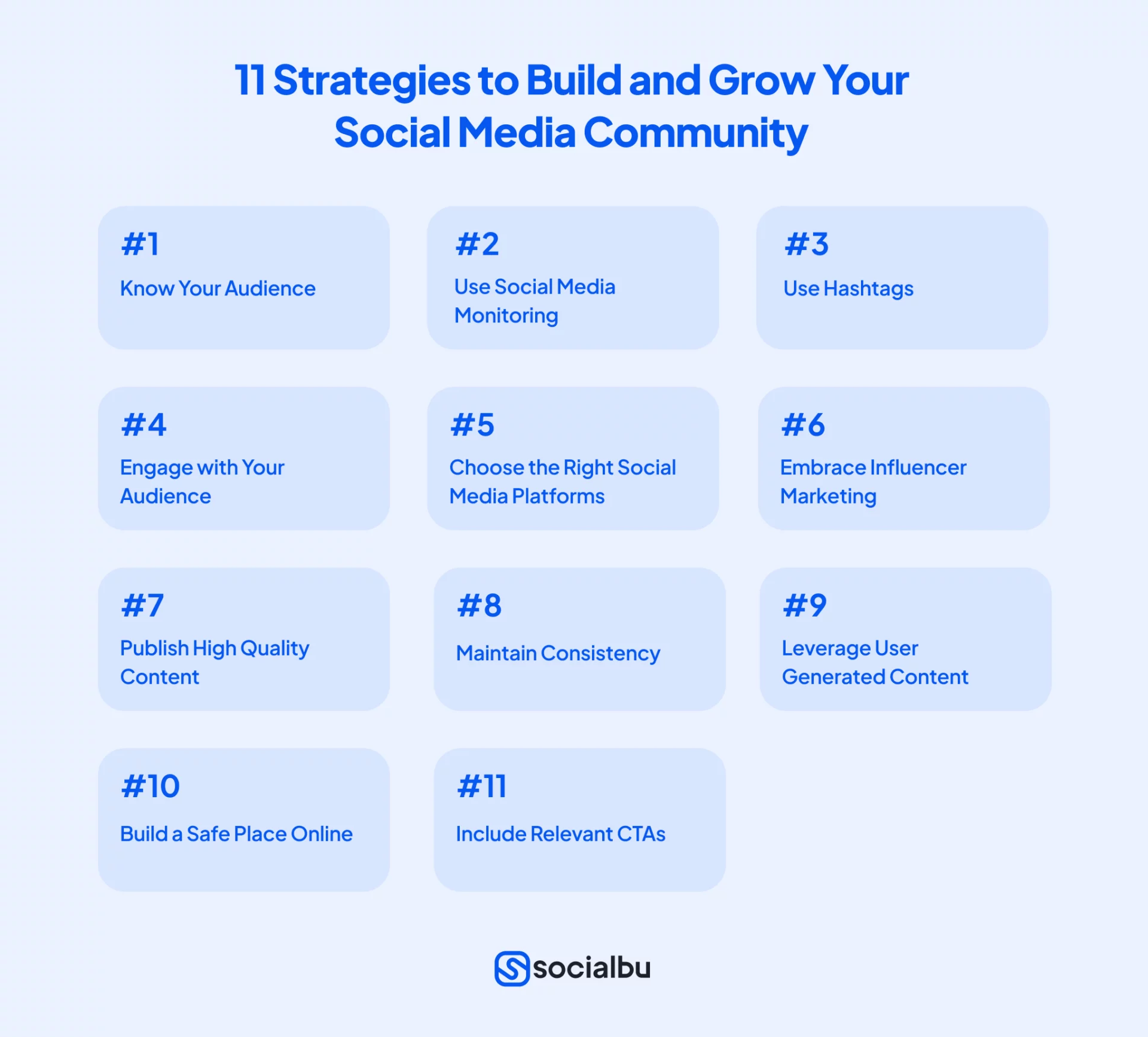
Building a strong community around your brand can significantly enhance your brand’s trust. Create spaces where your audience can connect and share their experiences, such as Facebook Groups or LinkedIn Communities.
Posing questions, hosting Q&A sessions, and sharing user-generated content can encourage discussions and participation. A vibrant, engaged community can become your brand’s advocate, spreading positive word-of-mouth and attracting new followers.
3. Influencer Collaboration
Collaborating with influencers expands your reach and adds credibility to your brand.
Select influencers whose values align with your brand and whose audience matches your target demographic. Influencer partnerships can take various forms, from sponsored posts and product reviews to Instagram takeovers and collaborative giveaways.
These collaborations should feel authentic and provide value to both the influencers and your audience. Ensure that the content created through these partnerships aligns with your brand’s voice and messaging.
4. Hosting Contests and Giveaways
Hosting contests and giveaways is an effective way to boost engagement and increase your follower count. Encourage participants to follow your account, like your posts and tag friends to enter. This not only increases visibility but also fosters excitement and interaction.
To maximize participation, ensure the prizes are relevant and valuable to your target audience. Clearly outline the rules and terms of the contest to avoid confusion and ensure a smooth execution.
5. Using Interactive Features
Social media platforms offer various interactive features that can enhance engagement. For example, you can use Instagram Stories polls, quizzes, and question stickers to encourage audience participation. Facebook and LinkedIn Live sessions provide real-time interaction, allowing you to address your audience’s questions and comments instantly.
Twitter’s Spaces and audio rooms on Clubhouse offer opportunities for live discussions and community-building. These features make your content more engaging and provide a platform for direct interaction with your audience.
6. Showcasing Behind-the-Scenes Content
Behind-the-scenes content gives your audience a glimpse into your brand’s inner workings, making it more relatable and authentic. Share stories about your team’s activities, product development processes, or preparations for an event.
This type of content humanizes your brand and builds a deeper connection with your audience. Use Instagram Stories, Facebook Stories, and TikTok to share these behind-the-scenes moments in a casual, engaging format.
7. Customer Feedback and Reviews
Encouraging and showcasing customer feedback and reviews builds trust and credibility. Share positive testimonials on social media platforms and respond to positive and negative reviews.
Addressing negative feedback professionally and constructively shows that you value your customer’s opinions and are committed to improving your products or services. This transparency enhances your brand’s reputation and fosters loyalty.
What Should You Do
- Active Engagement: Respond promptly and personally to comments and messages.
- Community Building: Create spaces for discussions and user-generated content.
- Influencer Collaboration: Partner with relevant influencers to expand reach.
- Contests and Giveaways: Host engaging activities to boost interaction and follower count.
- Interactive Features: Utilize polls, quizzes, live sessions, and audio rooms for direct engagement.
- Behind-the-Scenes Content: Share relatable and authentic glimpses into your brand.
- Customer Feedback: Highlight and respond to reviews to build trust and credibility.
Advertising and Paid Strategies
Effective advertising and paid strategies are essential to a successful social media presence. Let’s discuss the latest trends and best practices in social media advertising.
1. Targeted Ads
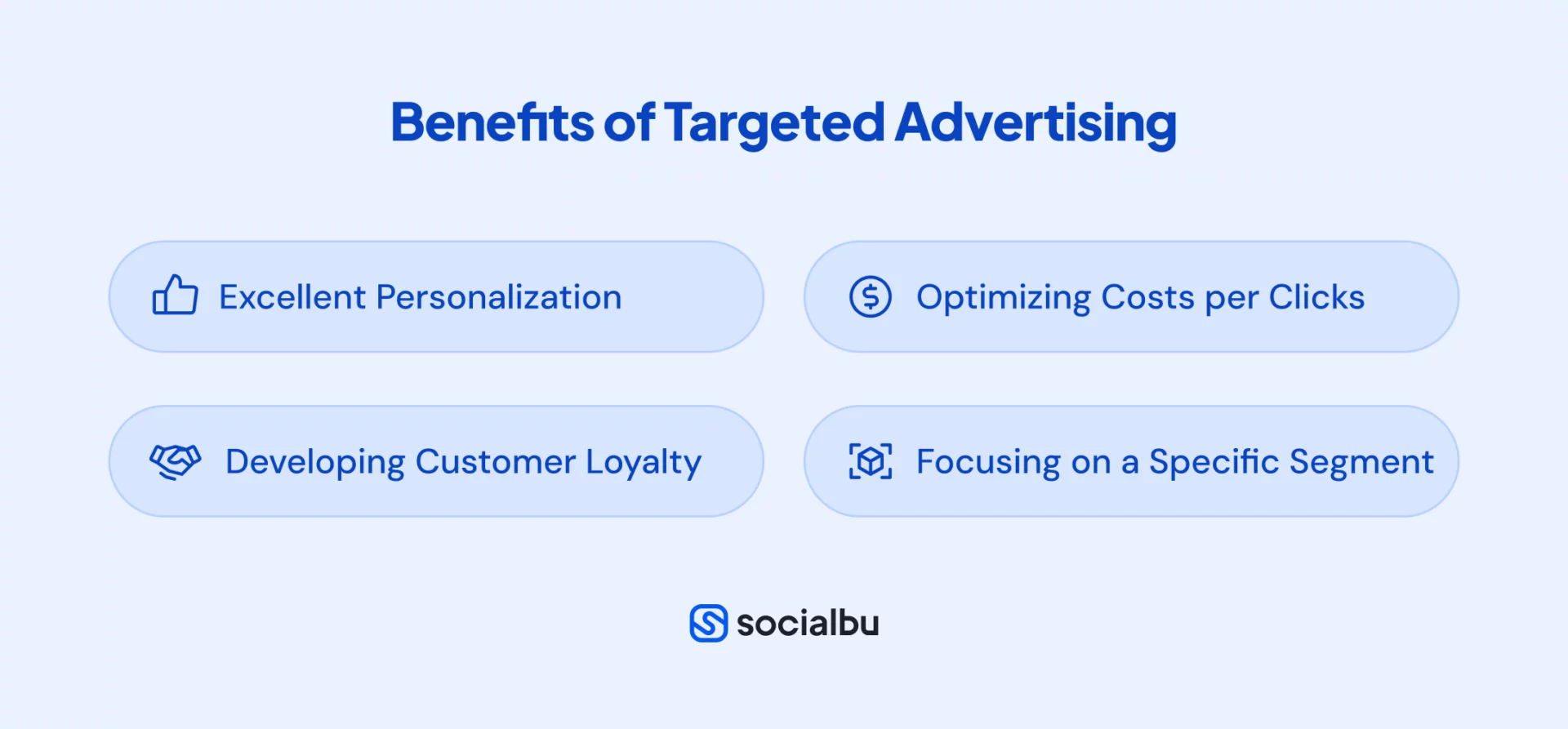
Targeted advertising is a powerful tool for reaching specific segments of your audience. Social media platforms like Facebook, Instagram, and LinkedIn offer advanced targeting options that allow you to focus your ads on users based on demographics, interests, behavior, and more.
This precision ensures that your ads reach the most relevant audience, increasing the likelihood of engagement and conversions. Craft compelling ad copy and use high-quality visuals to capture attention and encourage action.
2. Budget Management
Start by setting clear objectives for your campaigns, such as increasing brand awareness, driving traffic, or generating leads. Then, allocate your budget based on these goals and monitor your spending closely.
Use A/B testing to identify the most effective ad creatives and placements, and adjust your budget allocation accordingly. Tools like Google Analytics can help you track the performance of your ads and ensure you are getting the best return on investment.
3. Measuring ROI
Measuring your social media ads’ return on investment (ROI) is essential for understanding their effectiveness. Track key performance indicators (KPIs) such as click-through rates (CTR), conversion rates, and cost per acquisition (CPA).
Use these metrics to evaluate the success of your campaigns and make data-driven decisions for future ads. By regularly analyzing your ROI, you can identify areas for improvement and optimize your advertising strategy to achieve better results.
4. Retargeting Campaigns
Retargeting campaigns are an effective way to re-engage users who have previously interacted with your brand but have yet to convert. These ads target users who have visited your website, engaged with your social media posts, or abandoned their shopping carts.
Consistently remind customers of your products or services to encourage them to complete their purchases. Moreover, use engaging visuals and personalized messaging to make your retargeting ads more compelling.
5. Utilizing Social Media Ad Formats
Different social media platforms offer a variety of ad formats, each with its strengths and purposes. For example, Facebook and Instagram provide carousel ads that allow you to showcase multiple products or features in a single ad. LinkedIn’s sponsored content is ideal for promoting thought leadership and B2B marketing.
Explore the available ad formats on each platform and choose the ones that best align with your campaign goals. Experiment with different formats to see which ones resonate most with your audience.
6. Ad Placement Optimization
Optimizing ad placements is key to maximizing the effectiveness of your social media ads. Different placements, such as news feed ads, stories, and in-stream videos, perform differently based on the platform and audience.
Use the analytics tools provided by social media platforms to track the performance of your ads in various placements. Based on these insights, adjust your ad placement strategy to ensure your ads are seen by the right people at the right time.
What Should You Do?
- Targeted Ads: Use advanced targeting options to reach specific audience segments.
- Budget Management: Set clear objectives and monitor spending to maximize ROI.
- Measuring ROI: Track KPIs to evaluate and optimize ad performance.
- Retargeting Campaigns: Re-engage users who have previously interacted with your brand.
- Utilize Ad Formats: Choose the best ad formats for your campaign goals.
- Ad Placement Optimization: Optimize placements to ensure the right audience sees your ads.
Stay Updated and Adapt
Continuous learning and flexibility in your social media strategy cannot be underestimated. To maintain a competitive edge, learn to effectively monitor industry changes, adjust your approach time, and embrace innovation.
Following are some strategies for building a culture of adaptability within your team, ensuring your social media efforts remain relevant and impactful:
1. Continuous Learning
Staying updated with social media’s latest trends and changes is critical for maintaining a competitive edge. Platforms like Instagram, Facebook, and LinkedIn frequently update their algorithms and features, which can significantly impact your social media strategy.
To stay informed, subscribe to industry newsletters, follow reputable marketing blogs, and attend relevant webinars. Continuous learning ensures you can quickly adapt to and leverage new developments.
2. Monitoring Algorithm Changes
Social media algorithms determine how your content is displayed to users. These algorithms are constantly evolving to improve user experience. Monitor these changes closely to understand how they affect your content’s visibility.
For example, Instagram’s algorithm prioritizes content that receives high engagement shortly after posting. You can adjust your posting strategy to maximize reach and engagement by staying updated on such changes. Moreover, regularly review platform-specific guidelines and best practices to ensure compliance and optimize performance.
3. Flexibility in Strategy
Flexibility is essential in the ever-changing social media landscape. What works today might not work tomorrow. Be prepared to adjust your strategy based on new trends, changes in user behavior, and platform updates.
For example, if a new social media platform gains popularity among your target audience, consider incorporating it into your strategy. Review and adjust your goals, content, and tactics to stay relevant and practical.
4. Leveraging Case Studies
Learning from successful case studies can provide valuable insights and inspiration for your social media strategy. Analyze how other brands have adapted to changes and achieved success. Look for case studies within your industry to understand what tactics and strategies have worked well.
Incorporate these insights into your planning and execution to enhance your social media efforts. Case studies can also highlight common pitfalls to avoid, helping you make more informed decisions.
5. Networking and Collaboration
Networking with other social media and digital marketing professionals can offer fresh perspectives and ideas. Join industry groups, attend conferences, and participate in online forums to connect with peers.
Collaborating with others can lead to innovative strategies and mutually beneficial partnerships. Sharing knowledge and experiences with fellow professionals keeps you informed and inspired.
What Should You Do?
- Continuous Learning: Stay informed about the latest trends and updates.
- Monitor Algorithm Changes: Adjust your strategy based on algorithm updates.
- Maintain Flexibility: Be prepared to pivot your strategy as needed.
- Leverage Case Studies: Learn from successful examples in your industry.
- Network and Collaborate: Connect with peers for fresh ideas and partnerships.
- Experiment and Innovate: Test new approaches to discover what works best.
Wrap Up
Mastering social media best practices is essential for brands, creators, or startups aiming to excel in the digital landscape. These strategies form the backbone of an effective social media presence, from creating high-quality content and leveraging advanced tools to engaging with your audience and staying adaptable.
Ready to enhance your social media strategy? Try SocialBu for free – a robust social media management and automation tool for streamlined social media management and improved performance.
Sign up for a free 7-day trial now!
FAQs
What are the best practices for a social media marketer?
The social media best practices for a social media marketer include creating high-quality content, engaging with followers, leveraging analytics and automation tools, staying updated on platform changes, and continuously experimenting with new strategies.
Which of the following is a social media best practice?
A social media best practice includes regularly analyzing your performance metrics to make data-driven decisions and optimize your strategy for better engagement and reach.
What do social media best practices mean?
Social media best practices refer to the most effective methods and strategies for enhancing your social media presence, increasing engagement, and achieving your marketing goals.
What are the best practices for developing a social media strategy?
Developing a social media strategy involves setting clear objectives, understanding your target audience, creating engaging content, using analytics, and being adaptable to changes and trends.
What are the 5 P’s of social media?
The 5 P’s of social media are Plan, Produce, Publish, Promote, and Perfect, which guide creating and managing effective social media campaigns.
What are the 7 Cs of social media marketing?
The seven Cs of social media marketing are Content, Community, Conversation, Culture, Creativity, Consistency, and Conversion. These are essential for building a successful social media presence.
What is the best practice for using social media?
The best practices for using social media to reap the full benefits are:
- Know Your Audience: Understand their preferences and tailor content accordingly.
- Be Consistent: Post regularly and maintain a consistent brand voice.
- Engage Actively: Respond to comments and messages promptly.
- Use High-Quality Visuals: Eye-catching images and videos can boost engagement.
- Track Your Performance: Monitor analytics to measure success and make data-driven decisions.
What are the 7 C’s of social media strategy?
The 7 C’s of social media strategy are:
- Clarity: Clear and concise messaging.
- Content: High-quality, relevant content.
- Consistency: Regular posting and brand voice.
- Community: Building a strong online community.
- Creativity: Engaging content that stands out.
- Conversation: Active interaction with followers.
- Collaboration: Collaborate to get more eyeballs.
What is the 5 5 5 social media strategy?
The 5-5-5 social media strategy is a strategy marketers use to grow social media engagement. It involves commenting on five posts and liking five posts within five minutes. This strategy increases a company’s traffic and sales.
What is the best social media strategy?
The best social media strategy involves understanding your target audience, setting clear goals, consistently posting high-quality content, and actively engaging with your followers.
What are the 3 most used social media?
Currently, the top three social media platforms are:
- Facebook: 3 billion monthly active users
- YouTube: 2.5 billion active users
- Instagram: 2 billion monthly active users
What are the 10 steps to a successful social media strategy?
- Define your goals.
- Know your audience.
- Choose the right platforms.
- Create a content calendar.
- Create high-quality content.
- Engage with your audience.
- Use relevant hashtags.
- Run social media ads.
- Analyze your results.
- Adapt and improve.
What is the 4 P of marketing?
The 4 Ps of marketing is a framework that marketers use to design a campaign strategy:
- Product: What you’re offering.
- Price: How much it costs?
- Place: Where it’s sold.
- Promotion: How you market it to the target audience.
What are the 5 pillars of social media marketing?
The 5 pillars of social media marketing are:
- Strategy: Develop a clear plan with defined goals and target audience.
- Content Creation: Produce engaging content (text, visuals, videos) that resonates with your audience.
- Engagement: Actively interacting with your audience through comments, replies, and direct messages.
- Analytics: Track and measure the performance of your social media efforts to make data-driven decisions.
- Advertising: Use organic and paid advertising to reach a wider audience and achieve specific marketing objectives.
How can we make the best use of social media?
The best use of social media is to build brand awareness, engage with customers, generate leads, and drive sales.
Which of the following is a best practice of social media safety?
Be careful about sharing personal information and avoid accepting friend requests from strangers.
What’s the best way to be on social media?
The best way to be on social media is to be authentic, be yourself, engage meaningfully, and provide value to your audience.
What were the social media best practices 2024?
In 2024, social media best practices included:
- Short-form video content: Platforms like TikTok and Instagram Reels gained immense popularity.
- User-generated content: Encouraging followers to create content about your brand.
- Live streaming: Real-time engagement with your audience.
- AI-powered tools: Using AI for content creation, scheduling, and analytics.
- Strong brand voice and visuals: Consistent branding across all platforms.
What are social media best practices for students?
- Regularly review and adjust privacy settings to protect personal information.
- Be mindful of online activities.
- Avoid cyberbullying and report any incidents.
- Verify information before sharing to avoid spreading misinformation.
- Use polite and respectful language in online interactions.
What are social media best practices for employees?
Follow the given practices as an employee:
- Follow company guidelines for social media usage.
- Maintain a professional online persona.
- Avoid sharing sensitive company information.
- Be careful of how your online activities reflect on the company.
- Know how to respond to online crises or negative comments.
What are social media best practices for healthcare?
Being a healthcare professional, follow the below practices on social media:
- Adhere to HIPAA regulations and use the right healthcare appointment scheduling software
- Maintain professional boundaries with patients on social media.
- Share accurate and evidence-based health information.
- Develop a plan for responding to health crises or misinformation.
- Use social media to educate and engage with patients.
